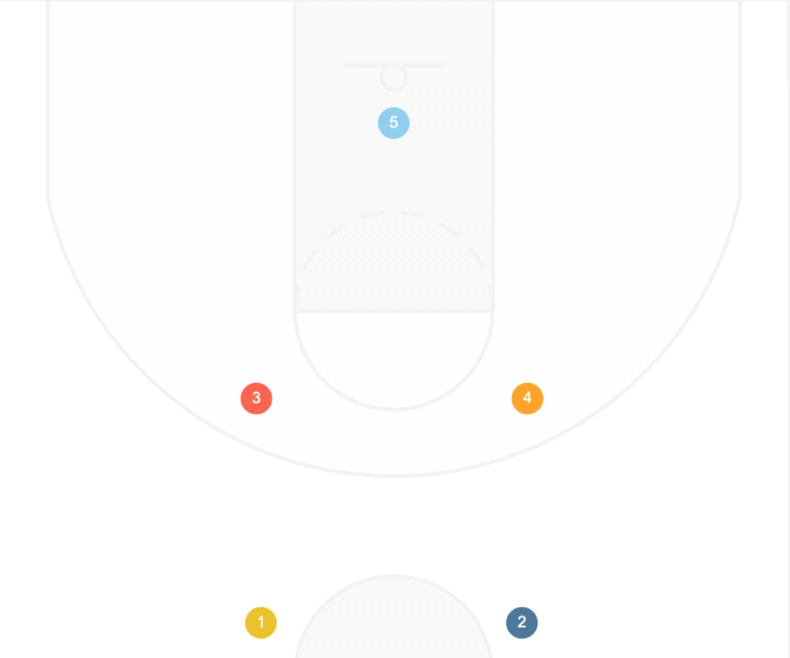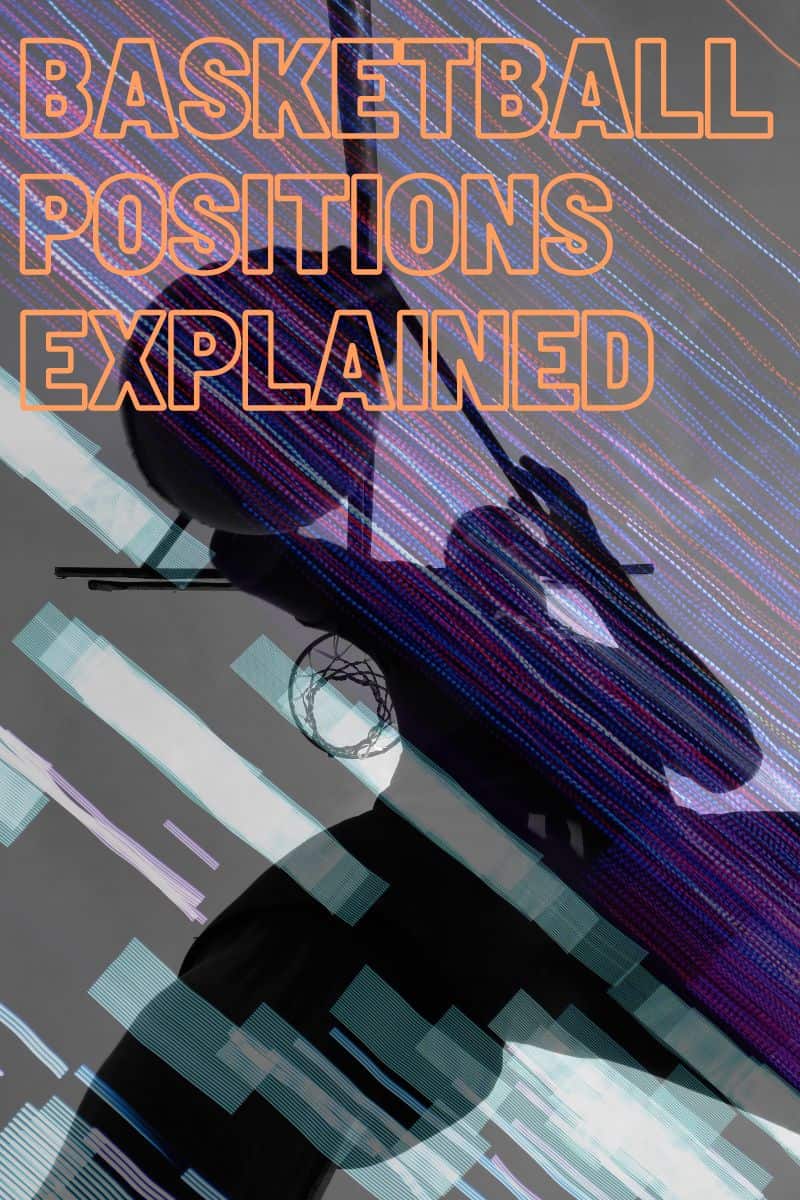Basketball positions can be confusing at first. Similar to rugby or soccer, the roles aren’t always as clearly defined as in sports like baseball or football. If you’re new to basketball, it looks like everybody is just doing pretty much the same thing.
With experience, it becomes apparent just how different the various roles can be. With this awareness comes a greater appreciation for the game. Understanding the roles played by each of the traditional basketball positions can unlock a deeper understanding of the game.
I’m still new to this myself. It’s only been a few years since I began own obsessive journey towards understanding basketball. That works to my advantage here in that sorting out the confusion in these systems is still fresh in my mind.
Understanding basketball roles and positions is an early step in gaining that ability to see the game in a different way, to get a glimpse behind the curtain, to see inside the basketball Matrix. Developing this basketball vision can make basketball more fascinating than it already is.
So let’s start taking this thing apart…
An Intro to Traditional Basketball Positions

Before we get too deep into the subtle aspects of each position, let’s just quickly run through the logic of the traditional basketball positions.
We have five players on the court. This is not always the rule but it is certainly the norm in advanced settings.
By virtue of basketball physics, the taller the player, the more valuable they are around the rim. So the Center, also known as the ‘big’ hangs out near the basket where they can use their size to either put the ball in or keep it out. Again, not a rule, but a likelihood.
Some infamous centers: Wilt Chamberlain, Bill Russell, Shaq, Hakeem Olajuwon, Nikola Jokić
It helps in most challenges to have a plan. On the basketball court, the man (or woman) with a plan is the Point Guard. This is something like a basketball quarterback if you’re more familiar with good ole American football.
One of the most important basketball positions, a point guard often initiates a play. This can be a more cerebral role than playing center. You’ll want to have a feel for the court and the movement of play. You need to be able to organize and direct your teammates efficiently. At advanced levels you need to be able to quickly read a defense and strategize accordingly.
You also need to be quick and shifty, able to weave around defenders and squeeze off shots and passes. And making good choices when you’re running out of steam means you need a good motor. A shorter, quicker player can thrive in the point guard position if they can keep up.
Some infamous point guards: Oscar Robertson, Steph Curry, Kyrie Irving, John Stocketon
Grasping just these 2 roles can change how you see the game. And we still have 3 players left to fill in the gaps. Traditionally, that’s one more guard and two forwards.
The extra guard, known as the Shooting Guard tends to work around the perimeter. This is often your best shooter. If traffic is looking rough near the basket, your shooting guard might see a better approach.
Some infamous shooting guards: Michael Jordan, Kobe Bryant, Reggie Miller, Klay Thompson
And the we have the forwards. In the very early days of the game (before 1901) shooting was terrible and dribbling wasn’t yet legal. This meant that you had to send some of your players forward into scoring territory to wait for a pass, kinda like ultimate frisbee. This is where the term ‘forward’ originated.
The Power Forward is kinda a bully. You want someone under the basket who has the mass to shift bodies around and get after rebounds. They should also be able to score up close and in the mid-range. The pushy profile tends to make your power forward a key defender.
Some infamous power forwards: Karl Malone, Tim Duncan, Dirk Nowitski, Bob Pettit, Elvin Hayes
That leaves the Small Forward. This ends up being one of the more hybridized roles, covering the conceptual gap between the power forward and the shooting guard. A good small forward should be strong and effective up close and also able to move quick and get open for a reliable outside shot.
Some infamous small forwards: LeBron James, Larry Bird, Julius Erving, Elgin Baylor
Basketball Position Numbering 1-5
Basketball positions are frequently referred to by number. It’s a common sports thing. I’d love to know where it came from but it seems to have emerged from time itself so we’ll just have to take it for granted.
Learning your position numbering is clutch to keep up with the game. Announcers and commentators refer to this numbering all the time and if you don’t know it, you’re gonna be confused.
Start with the 1 and the 5. These are the ones that come up the most.
The 1 is the point guard and the 5 is the center.
It’s not that the other positions aren’t important. The point guard and the center just have a way of dictating the flow of the game and pulling attention. For the casual observer, knowing your 1’s from your 5’s should be enough to stay afloat.
For the remaining players you can fill in the gaps by thinking in terms of size or distance from the basket. If the 1 is typically your shortest player, playing with a zoomed out view of the court and your 5 is your biggest player, focused on the basket, then 2-3 fill in the middle in a logical fashion.
The 2 is your shooting guard, closest to your point guard, playing the perimeter. The 4 is your power forward, backing up your center in the paint. And that leaves the 3, your small forward, working the middle.
So if you get mixed up, you can always reason your way through it by just remembering the hierarchy: big to little, outside to inside.
The numbering does continue into the stretch positions, but it’s much less common to refer to these positions by number without at least a little bit of context.
Stretch Basketball Positions
The traditional lines are often blurred. Today we see increasing versatility in advanced play.
In the Jokić era It’s not unheard of for a massive center to be able to hit 3’s like a shooting guard and run the floor like a point guard. And incredible athleticism in smaller players can make them dangerous around the basket.
More flexible positioning has evolved to better describe these types of players who bend expectation.
Combo Guard
A combo guard is pretty straightforward. This type of player has the skills to be competitive in either of the guard positions. They have the court vision to run the floor in the 1 and they have the athleticism and driving ability to shoot or charge the basket at the 2.
A great example of this is Steph Curry. Steph can be incredibly effective in either role. He’s an elite passer, he can drive to the basket, he can see the court and run the crew, and we all know he can shoot.
Combo Forward
Similar to the combo guard, this is a player who can cover both forward positions.
Stretch Four
A stretch four is a power forward who can shoot. A power forward should have a decent mid-range game at this point anyway, so that’s not saying much. A center should be making 3’s in today’s game.
Dirk Nowitski is a classic example of a stretch four. He was a great power forward, strong around the rim, but he was also a dangerous shooter.
Swingman
Swingman generally refers to a player who can function in both wing positions, shooting guard or small forward. This may be one of the more common stretches. The positions share a similar region of the court and require similar skills without much specialized knowledge or talent requirements.
Point Forward
This is one of the most interesting and challenging positions on the list. A point forward is a forward who is capable of running an offense. A point forward can initiate an attack, then guard a forward on the way back.
Larry Bird is the quintessential example of a point forward. He was known as a forward but he was a fantastic facilitator in his prime.
The History of Basketball Positions
From the early days in 1898, with Naismith’s peach basket and those early handwritten rules, there have been positions in basketball.
Like, it really took no time at all to figure out that you needed different types of players to fill in different types of responsibilities. And considering that Naismith was an early student of recreational theory, he would well have been familiar with the concept of roles in sports. He probably considered theory as he developed the rules of basketball.
But the initial game was not what it is today. It wasn’t until 1901 that dribbling was added as a feature. So for those first 3 years of basketball’s existence, it looked a little more like ultimate frisbee where players were sent into scoring territory to receive passes.
So the initial structure of the game called for only 3 positions: a center, two guards and two forwards. Guards were focused on ‘guarding’ other players and their own basket. Forwards were sent ‘forward’ to score. The center stayed in the ‘center’.
With the introduction of dribbling, a loophole in Naismith’s “no running with the ball”, rule, basketball hit its first major evolutionary step and began to call for more specified roles.
I modern times, as play and athleticism continue to evolve, it’s become useful to talk in terms of increasingly specific roles that span the boundaries placed on traditional roles. In some ways this is superfluous, but it can help to describe a versatility of play.
Basketball Positions F.A.Q
What are wings in basketball?
In basketball, the term ‘wing’ can refer to one of two things.
In the context of court positioning, ‘wings’ refers to the regions of the court to either side of the paint. The term is pretty flexible. There isn’t really an official ‘wing’ zone on a basketball court, it just indicates a general region.
But more important to the topic at hand, when used in the context of personnel, the ‘wings’ are players that have a tendency to spend the most time on the wings. That would be the shooting guard and the small forward.
What position did Michael Jordan play?
Jordan played mostly as a shooting guard. He played an impressive stretch as a point guard in the 1988-1989 season. And he closed out his career in the power forward position with the Wizards. But Jordan was a shooting guard for the majority of his career and that’s where he shined.
What’s the most difficult position in basketball?
That’s a pretty subjective question, but the point guard is probably the most difficult position to play all around. The point requires a deep level of court awareness that takes hard work to build. You can’t fake it with genetic gifts or rely on any one skill. You have to put in quality time on the court to be able to run an offense efficiently.
What position does Lamello Ball Play?
Lamello is a guard, primarily a point guard. He would work as a shooting guard. Some might argue he would excel, but formally, with the Hornets he’s basically always a point guard.
Can anyone play all 5 positions in basketball?
Yes. A handful of the top NBA players of all time have been known to be capable of playing effectively across all 5 positions. The best example would be Magic Johnson. In the 1980 NBA finals, Magic played all 5 positions in the final game to clinch the title and the MVP. Magic was primarily a forward, but he stretched well into the guard spots and he could hold his own at the 5.
